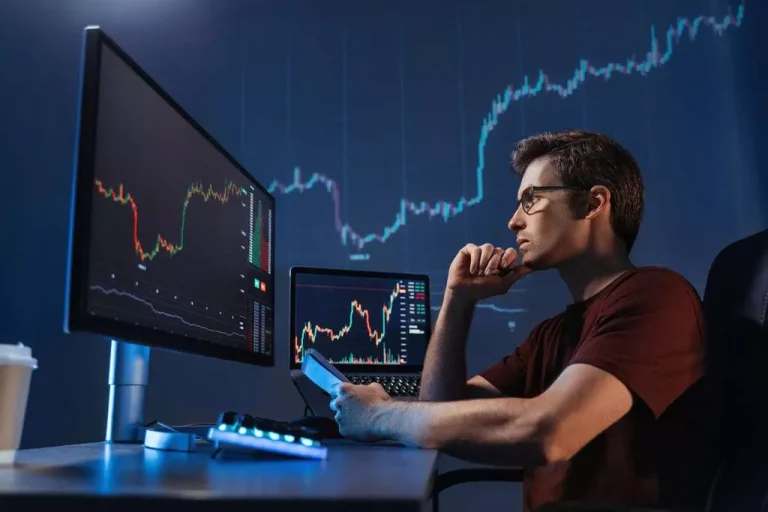Institutional traders generally interact in block trades, often exceeding 10,000 shares, to leverage their massive capital swimming pools and exert a considerable affect on inventory costs. Their trades are strategically distributed amongst numerous brokers or over time to discreetly combine their sizable orders into the market with out precipitating sudden worth shifts. Institutional buyers are the large guys on the block—the elephants with a great amount of institutional trading monetary weight to push round.
Institutional Buying And Selling Strategies For Success
Institutional investor examples embrace pension funds, mutual funds, insurance coverage firms, college endowments, and sovereign wealth funds. In the context of trading, the institutional market refers back to the section of the overall market where establishments and companies manage their property. Institutional merchants purchase and promote different financial devices for the accounts they handle on behalf of others, and they handle giant swimming pools of capital. Their collective actions might lead to market-wide shifts, affecting costs and ranges of volatility.
Technical Analysis With A Twist
Thus, people with a restricted understanding of inventory market dynamics can rely on this instrument to mobilize their disposable earnings. Simply put, good cash refers to institutional traders with the experience and the sources to make fast and worthwhile decisions in the market. These merchants have lots of data at their disposal and use it to make knowledgeable choices about the place to place their cash. Most funding companies are either closed- or open-end mutual funds, with open-end funds regularly issuing new shares as it receives funds from buyers. Closed-end funds concern a exhausting and fast number of shares and typically commerce on an trade. So, whether or not you are a retail dealer or an institutional trader, it’s necessary to know the dynamics of institutional buying and selling and the way it impacts the monetary market.
Conclusion: The Importance Of Understanding Institutional Trading

There’s also relative worth arbitrage, which seems across related merchandise and keeps them in line. Index arbitrageurs will purchase and sell futures and options on these indexes, and concurrently purchase and promote each part of the index (yes, for the S&P 500, that’s 500 stocks at once) to have the ability to maintain costs in line. It takes lots of capital and lots of tech infrastructure to run an arbitrage operation similar to this, however the result’s ultra-efficient markets. Market makers and short-term traders earn a profit when there’s a difference within the bid-ask spread.

Arbitrage: Exploiting Value Inefficiencies
However, retail merchants may face challenges when competing with institutional traders as a outcome of their limited resources and access to information. Institutional traders usually use brokers and specialised buying and selling platforms to execute their trades. Large orders could additionally be traded over several days to minimize market impression and scale back the danger of price slippage. Algorithmic trading and darkish swimming pools are also used to execute trades effectively and discreetly. So, whether you are a retail trader or an institutional trader, it’s essential to remain up-to-date on industry trends and buying and selling strategies to make sure that you’re taking advantage of your trades. Unlike institutional traders, retail merchants normally commerce blocks of forex by way of to the exchanges.
- Be it the retail merchants wanting to shift to institutional buying and selling or desirous to get employed within the institutional buying and selling firm, there are plenty of questions in regards to the concept.
- Institutional ownership can point out that a selected stock has a great alternative to e-book a revenue.
- They are capable of fund and manage their portfolio in such a method that they’ll make earnings constantly.
- You faucet or click, and inside a second or two you’ve exchanged your money for inventory.
Rebalancing of the index is the simple means of realigning the weights of the financial instruments within the portfolio. The rebalancing of the index is nothing but preserving the portfolio balanced by modifying the financial instruments within the portfolio in such a means that the chance stays kind of the identical over a period. It’s any group or particular person dealing in securities in large volumes on behalf of different entities.
What Is The Difference Between Retail And Institutional Trading?
While the retail investor is usually in search of the holy grail trading strategy, the institutional investor is far more thinking about having a portfolio of trading methods which are uncorrelated to each other. Another thing about institutional traders is that they choose the kind of shares (or markets) they trade — they typically concentrate on higher-cap stocks, as they have more liquidity. These merchants keep away from smaller-cap stocks as a end result of they could not want to be majority homeowners or decrease liquidity to the point where there could also be nobody to take the opposite facet of their trades. Looking ahead, the future of institutional trading is ready to unfurl inside a site increasingly governed by the breakthroughs of fintech.
Carry Buying And Selling: A Long-term Technique

That’s why it’s important to do your homework and learn as much as attainable before you begin trading. The more you realize, the higher equipped you’ll be to make sensible decisions in the marketplace. You may marvel if there are any dangers to buying and selling like “smart cash.” And the answer is absolute. This is a good way to get insights from other merchants and study from their experiences. And fortunately, there are a lot of resources on the market that may assist you to get began.
Their strategies typically contain in-depth market analysis and the utilization of superior devices. By preserving up-to-date with recent stories, professional tips, and evaluation of this matter, you can make knowledgeable investment decisions that can allow you to achieve your financial targets. To ensure stability within the monetary market, regulatory frameworks are in place to manipulate institutional trading companies. By executing giant trades, they will move markets and affect prices, which may be each constructive – by providing liquidity – or negative – by creating volatility. High-frequency trading algorithms can execute trades quicker than human merchants ever could, which has led to increased competition and decrease earnings for some establishments. The New York Stock Exchange is amongst the most well-known exchanges in the world, and it is the place many institutional merchants conduct their enterprise.
Such exotic instruments are not available to retail merchants often since institutional buyers have the large funds needed for such investments. Some are individual traders, some are huge institutional and commercial traders, and some are intermediaries who buy when others are selling and promote when others are buying. Institutional traders maintain a major amount of capital, which allows them to exert a greater affect on the inventory market than retail traders. Their large-scale trades may cause value fluctuations and impact market tendencies. However, retail traders additionally contribute to market liquidity and price discovery. Institutional merchants make use of numerous strategies, including world macro methods that consider macroeconomic elements, and index rebalancing, generally used by mutual funds.
As a outcome, these institutional traders put the vast majority of their belongings into low-risk investments similar to Treasuries or cash market funds. The large pension fund within the United States, California Public Employees’ Retirement System (CalPERS), reported total assets of greater than $459 billion as of July 31, 2021. Institutional traders management a major amount of all monetary assets within the United States and exert considerable influence in all markets. This affect has grown over time and could be confirmed by analyzing the focus of possession by institutional investors within the fairness of publicly traded companies. In 2021, gross revenues for FINRA-registered brokers and sellers were $398.6 billion, up 10.1% over the previous year. As the scale and significance of establishments proceed to develop, so do their relative holdings and affect on the monetary markets.
They move hefty positions, each quick and long, which represent a big portion of the transactions in exchanges. Apart from these 5 sorts, commercial banks are additionally thought-about as institutional investors. Its characteristics are somewhat in keeping with mutual funds’, in that they’re designed to reduce risk and improve returns through a diverse portfolio.
The danger of inadvertently acquiring a controlling interest or disrupting market liquidity necessitates a bias towards larger market capitalization stocks. The distinction in buying and selling volumes between institutional and retail merchants is stark and vital, with implications for market dynamics. When we converse of institutional vs retail trading volume, we’re contrasting the heavyweight punches of the market’s giants with the more agile jabs of particular person traders.
Read more about https://www.xcritical.in/ here.
